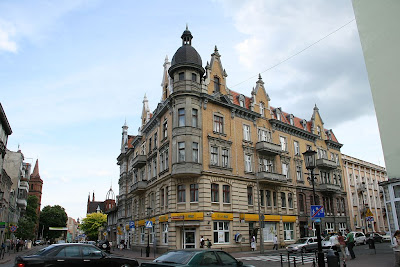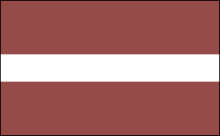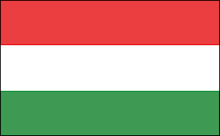NOWE WYDAWNICTWA! TAJEMNICZE MIASTO - TOM 1 ORAZ PRZEWODNIK PORÓWNAWCZY CZ.
2
-
[image:
http://www.cmsklep.eu/michal-szymanski-warszawa-tajemnicze-miasto-stara-warszawa-p-137.html]
[image:
http://www.cmsklep.eu/warszawa-pozostale-d...
wtorek, 21 sierpnia 2012
GNIEZNO
Wyświetl większą mapę
Gniezno (ponad 70.300 mieszkańców) to pierwsza stolica Polski, miasto, które uzyskało prawa miejskie na pocz. XIII w., choć gród obronny istniał tu już w VIII w. W 1000 odbył się zjazd, gdzie król Bolesław Chrobry i cesarz Otton III proklamowali istnienie arcybiskupstwa gnieźnieńskiego, a w 1025 koronowano tu Chrobrego na króla Polski. W 1038 miasto najechali Czesi i spalili, a w XIV w. Krzyżacy. Dopiero za rządów Kazimierza Wielkiego miasto odzyskało blask i aż do XVIII w. było jednym z najważniejszych miast Królestwa Polskiego. Po rozbiorach Gniezno znalazło się w zaborze pruskim. Kilka razy spalone, dlatego układ urbanistyczny odpowiada temu, jakim ułożono go w XIX w. W czasie II WŚ hitlerowcy zasiedlali tereny ludźmi z republik radzieckich, a Armia Czerwona, oswabadzając miasto, spaliła przy okazji katedrę. Dziś jest to spore miasto, ośrodek kulturalny, naukowy i przemysłowy, a także turystyczny.
Gniezno (over 70,300 inhabitants) is the first Polish capital, a city that was chartered at the beginning of the XIII century, although there was a stronghold here in the VIII century. In 1000 a Congress was held here, where the King Boleslaw the Brave and Emperor Otto III proclaimed the existence of the Archbishopric of Gniezno, wand Boleslaw was crowned here in 1025 for the Polish king. In 1038 the city was invaded and burned the Czechs and in the XIV century by Teutonic Knights. The city regained its luster in the times of the reign of Casimir the Great and until the XVIII century it was one of the most important cities of the Polish Kingdom. After the partition of Poland, Gniezno got under Prussian rule. Several times burned, so the urban layout corresponds to which it was composed in the XIX century. During the Second World War the Nazis occupied the area and settled people from Soviet republics here, and the Red Army, setting the city free in 1945, burned the cathedral down. Today it is a big city, cultural, scientific, and industrial, and it's a tourist centre.
Liceum w którym umieszczono Muzeum Początków Państwa Polskiego.
Katedra gnieźnieńska znad jeziora Jelonek
Dom przy ul. Łaskiego
Katedra gnieźnieńska - Bazylika prymasowska Wniebowzięcia NMP z końca IX w.
Cathedral - Primate basilica of St. Mary Assumption from the end of the IX c.
Grób św. Wojciecha
St. Adalbert of Prague's grave
Drzwi gnieźnieńskie z XII w.
Gniezno door from the XII c.
Ulica Tumska
Tumska Street
Rynek
Main square
Rynek z kościołem franciszkanów
Main square with Franciskaners' church
Kościół garnizonowy
Army's church
Kościół Wniebowzięcia NMP i św. Antoniego z XV w.
Church of St. Mary Assumption and St. Anthony from the XV c.
Emblematy miast na rynku
Cities emblems in the pavement of the main square
Muzeum Początków Polski - świetne pokazy 3d
Museum of the Begining of Poland with some great 3D shows
Uniwersytet Gnieźnieński
Gniezno University
Subskrybuj:
Komentarze do posta (Atom)


























































Brak komentarzy:
Prześlij komentarz